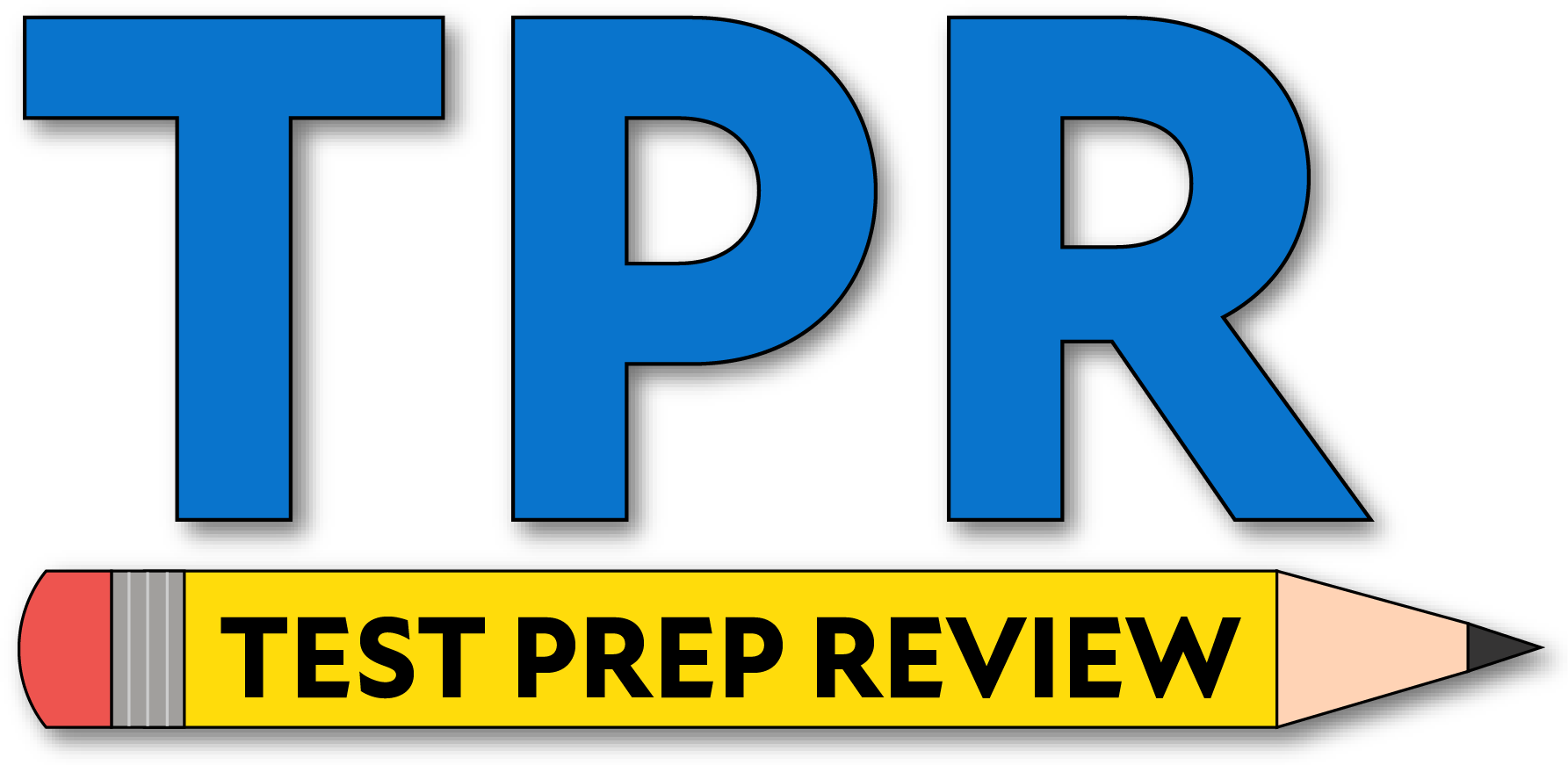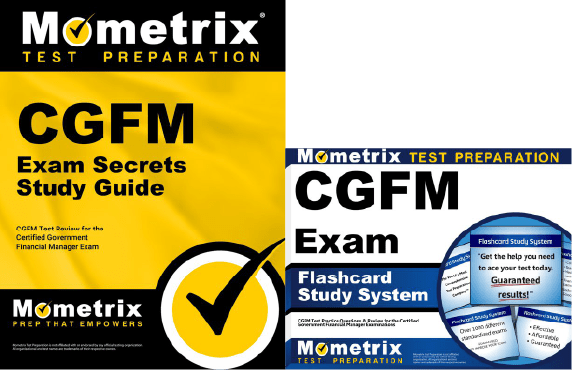If you need help studying for an CGFM exam or just want some more information about what the exams are like, you’ve come to the right place.
Click below to take a free CGFM practice test!
What’s on Each Exam?
There are three CGFM exams, and you’ll have to pass all three to get your CGFM certification. Each exam contains 115 multiple-choice questions and is timed at 2 hours and 15 minutes.
Let’s take a closer look at the different sections of each exam.
Governmental Environment
EXAM 1
- Differentiating between the levels of government
- Differentiating between the branches of government
- Examining the components of federal, state and local governments
- Identifying the authorities and responsibilities of the government
- Identifying the authorities and responsibilities of the different types of governments
Legally Based Implications of the Government Financial Environment
- Recognizing the implications of sovereignty in the levels of government
- Demonstrating an understanding of the budget
- Recognizing special funds, dedicated revenues, and related legal requirements
- Explaining legislative earmarking
The Government Management System (Cycle)
- Describing the elements of the government management system
- Identifying the interrelationships among the elements of the government management system
- Recognizing the importance of data in decision making in the government management system
Governmental Financing Process
- Recognizing the role of taxation
- Explaining intergovernmental and other revenue
- Identifying other forms of financing
- Explaining the role of debt
Concepts, Definitions, and Notions of Public Accountability
- Recognizing the meaning and purpose of accountability in the government environment
- Recognizing the fundamentals of accountability
- Identifying the methods used to demonstrate and assess accountability and transparency
- Recognizing the techniques used to assess fiscal sustainability and solvency
- Explaining concepts of open government, data transparency and citizen-centric reporting
Ethics as Applied to the Government Environment
- Applying key concepts related to ethical responsibility to the public, professional conduct
- Determining the steps a government financial manager needs to take to avoid a conflict of interest and to ensure objectivity and independence
- Explaining the concept of due care in the performance of professional duties
- Identifying activities or situations that are inconsistent with the responsibilities of public officials and employees
- Determining the appropriate course of action to avoid the reality or the perception of improper use of one’s office for personal gain
- Explaining personal responsibility as it relates to organizational codes of conduct
Providing Government Services and Information Electronically
- Recognizing delivery of government services and e-government
- Examining stakeholder real-time access to information
- Identifying the use of various media and tools for communications and providing services
- Explaining security, cybersecurity, and privacy considerations
Governmental Accounting, Financial Reporting, and Budgeting
EXAM 2
- Analyzing the influences, objectives and role of standards
- Applying the concepts of managerial cost accounting and fee establishment
- Recognizing the concepts of budgeting
- Recognizing the general principles of governmental financial accounting
State and Local Financial Accounting and Reporting
- Applying GASB standards to determine the reporting entity, including component units
- Identifying the purpose of each fund type within each fund category, and its related basis of accounting
- Identifying the form and content of the Annual Comprehensive Financial Report (ACFR)
- Recognizing the purpose of popular reporting
- Identifying the form and content of the basic financial statements
- Determining the reporting of fund balance in governmental funds
- Identifying the form and purpose of required supplementary information (RSI)
- Determining how to measure, record, and report the purchase of capital assets
- Determining how to measure, record, and report the incurrence and repayment of general long-term obligations in a governmental fund
- Determining how to measure, record, and report common, fundamental current assets and liabilities, revenue, expenditures, and other financing sources and uses
- Determining how to measure, record and report common, fundamental assets, liabilities, revenue and expense transactions when using accrual basis of accounting
- Recognizing types of interfund transactions, and how they are accounted for
- Explaining how to consolidate or eliminate transactions between the fund level and the government-wide level for governmental activities
- Recognizing the required disclosures for cash deposits with financial institutions and investment
- Recognizing the option and criteria for using the modified approach for infrastructure
- Recognizing the state and local budgetary equation
- Identifying the entries for recording the budget, modifying the budget and recording encumbrances and expenditures
- Recognizing the differences between budgetary information and the generally accepted accounting principles (GAAP) information
- Explaining how to reconcile the fund financial statements to the government-wide financial statements
- Identifying government combinations
Federal Financial Accounting and Reporting
- Differentiating the role of FASAB and the interrelationships among the OMB, US Department of the Treasury, and the GAO in federal financial accounting and reporting
- Defining key budgetary terms
- Recognizing the federal budgetary equation
- Determining the relationship and differences between budgetary and proprietary accounting
- Identifying types of funds
- Describing the use of the US Standard General Ledger
- Determining how to record common, fundamental budgetary transactions
- Determining how to record common, fundamental proprietary transactions
- Determining the reporting entity
- Identifying the elements of an agency financial report (AFR) and a performance and accountability report (PAR)
- Identifying the purposes, form and content of the basic financial statements
- Recognizing the concepts of consolidation and intragovernmental transactions
- Identifying the purposes and form of the notes to the financial statements
- Identifying the purposes and form of required supplementary information (RSI)
- Recognizing the concept of Fund Balance with Treasury
- Recognizing the concepts of accounting for loans and loan guarantees (Credit Reform Act)
- Identifying basic requirements for the US Consolidated Financial Report
Governmental Financial Management and Control
EXAM 3
- Recognizing concepts of cash management
- Recognizing concepts of investment management
- Recognizing concepts of loan and loan guarantee programs and debt collection
- Demonstrating an understanding of procurement management
- Recognizing concepts of property management
- Recognizing concepts of operating materials and supplies/inventory management
- Recognizing concepts of financial and other information systems, system development, and technical tools
- Recognizing concepts of shared services
- Recognizing concepts of project management
Financial and Managerial Analysis Techniques
- Conducting the following analyses: present value, future value, cash flow, pay-back, trend, ratio analysis, strategic sourcing, regression analysis, earned value management and flowcharting
- Identifying the sources of information used and reliability of the data for financial and managerial analysis
- Explaining the use of forensic auditing techniques
- Recognizing the concepts and types of data analytics and data analysis
Internal Control
- Identifying concepts of internal control
- Explaining how to apply internal control
- Recognizing internal control responsibilities
- Recognizing the internal control evaluation process
- Identifying the internal control reporting process
- Recognizing concepts of enterprise risk management (ERM)
Performance Measurement/Metrics/Service Efforts and Accomplishments
- Identifying the objectives of financial and non-financial performance measures
- Recognizing how performance measures relate to organizational goals and objectives
- Identifying how financial and non-financial performance measures are linked
- Recognizing how financial and non-financial performance measures are integrated with the strategic plan and budget
- Describing the uses of performance measurement and reporting to demonstrate public accountability and transparency
- Describing the uses of performance measurement and reporting to improve allocation of resources and oversight of performance
- Describing uses of performance measurement and reporting to improve effectiveness and efficiency
- Recognizing the types of performance measures: inputs, outputs, outcomes and efficiency measures
- Distinguishing between the characteristics of performance measurement data
- Identifying baselines and benchmarks
- Identifying the role of stakeholder input in the performance process
- Recognizing the legal requirement and guidance for performance measurement
Auditing
- Recognizing the role of auditing
- Recognizing the role of auditing standards
- Recognizing the responsibilities of the auditee
- Recognizing the components and requirements of the Single Audit Act
How to Register
To get started, you’ll need to be accepted into the CGFM program. Then, you’ll be able to register and schedule an exam appointment with Pearson VUE.
When you register, you’ll also need to submit the testing fee, which is $135 per exam.
Exam Scores
The exams are scored using a scaled scoring method. Here’s how it works:
For every question you answer correctly, you get one point added to your raw score. At the end of the test, your final raw score will be converted to a scaled score. This scaled score will range somewhere between 200 and 700.
The reason your raw score is converted to a scaled score is because everyone who takes the tests are given a slightly different set of questions. Since everyone has a different arrangement of questions, and because some questions are harder than others, converting your raw score to a scaled score ensures a more even playing field.
Retaking the Exam
If you didn’t get a passing score on your first try, that’s okay! You can retake an exam after a 30-day waiting period.
Keep in mind that you will have to pay the full testing fee every time you retake an exam.
FAQs
How many questions are on the CGFM exam?
The exams each contain 115 questions (345 questions total).
What is the time limit for the CGFM exam?
The exams are each timed at 2 hours and 15 minutes (6 hours and 45 minutes total).
What is the passing score for the CGFM exam?
You’ll need a final scaled score of 500 on each exam to obtain your CGFM certification.
How much does the CGFM exam cost?
The testing fee for each exam is $135.



 CGFM Study Guide
CGFM Study Guide CGFM Flashcards
CGFM Flashcards